-
 Bitcoin
Bitcoin $118000
-1.29% -
 Ethereum
Ethereum $3758
-3.52% -
 XRP
XRP $3.113
-5.04% -
 Tether USDt
Tether USDt $0.9998
-0.05% -
 BNB
BNB $818.5
-3.23% -
 Solana
Solana $181.9
-5.10% -
 USDC
USDC $0.9997
-0.04% -
 Dogecoin
Dogecoin $0.2239
-8.33% -
 TRON
TRON $0.3233
0.95% -
 Cardano
Cardano $0.7842
-6.81% -
 Hyperliquid
Hyperliquid $43.35
-2.12% -
 Sui
Sui $3.894
-9.97% -
 Stellar
Stellar $0.4176
-6.99% -
 Chainlink
Chainlink $17.97
-6.68% -
 Bitcoin Cash
Bitcoin Cash $576.7
-2.30% -
 Hedera
Hedera $0.2671
-7.23% -
 Avalanche
Avalanche $24.64
-6.12% -
 UNUS SED LEO
UNUS SED LEO $8.972
0.08% -
 Litecoin
Litecoin $108.1
-6.55% -
 Toncoin
Toncoin $3.198
-5.94% -
 Shiba Inu
Shiba Inu $0.00001325
-6.80% -
 Ethena USDe
Ethena USDe $1.001
-0.04% -
 Uniswap
Uniswap $10.27
-7.02% -
 Polkadot
Polkadot $3.935
-7.49% -
 Monero
Monero $317.7
-2.24% -
 Dai
Dai $0.9999
0.00% -
 Bitget Token
Bitget Token $4.550
-3.85% -
 Pepe
Pepe $0.00001179
-8.68% -
 Cronos
Cronos $0.1418
-2.34% -
 Aave
Aave $286.2
-6.49%
How to choose a liquid staking provider?
Liquid staking lets users earn rewards while keeping funds liquid, but choosing a secure, compatible provider is key to maximizing yield and minimizing risk.
Jul 29, 2025 at 02:29 am
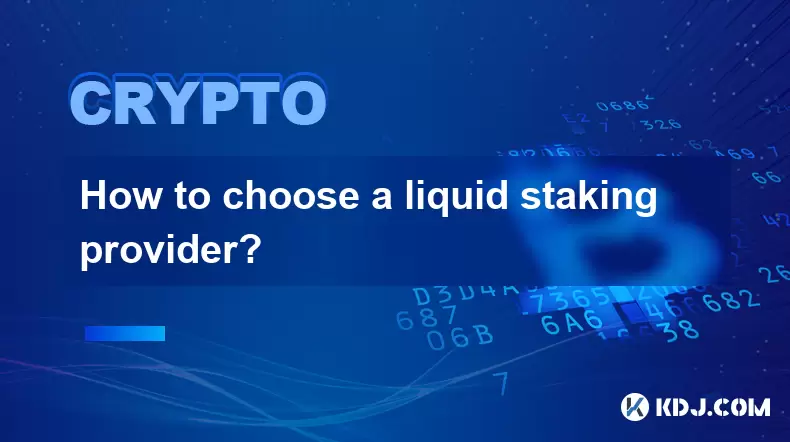
Understanding Liquid Staking
Liquid staking is a process that allows cryptocurrency holders to stake their assets while retaining liquidity through the issuance of derivative tokens representing the staked assets. This innovation enables users to participate in network security and earn staking rewards without locking up their funds. However, with the growing number of liquid staking providers, choosing the right one has become a critical decision for users.
The core benefit of liquid staking lies in its ability to combine yield generation with liquidity, making it especially appealing to DeFi participants and long-term investors. As the market evolves, providers differentiate themselves through various factors such as tokenomics, slashing insurance, and supported blockchains.
Supported Blockchains and Token Compatibility
One of the primary considerations when selecting a liquid staking provider is the range of supported blockchains and native tokens. Not all providers support every Proof-of-Stake (PoS) chain, so users must ensure their preferred network is available.
- Ethereum (ETH) is the most common token for liquid staking due to its widespread adoption and high staking demand
- Cosmos-based chains such as ATOM, OSMO, and JUNO also have growing liquid staking ecosystems
- Solana (SOL), Polkadot (DOT), and Cardano (ADA) are also gaining traction in the liquid staking space
Providers like Lido, Rocket Pool, and Stakehouse support multiple chains, but users should verify compatibility before committing assets. Choosing a provider that supports your preferred chain ensures seamless integration with your existing portfolio.
Slashing Risk and Insurance Coverage
Slashing is a penalty mechanism in PoS networks where validators lose part of their staked assets due to misconduct or downtime. Liquid staking providers may absorb these penalties or pass them on to users, depending on their risk model.
- Some platforms offer slashing insurance to protect users from unexpected losses
- Others operate under a non-custodial model, where users bear the full risk of slashing events
It is crucial to review the provider's documentation to understand their slashing policy. Providers with transparent slashing mitigation strategies and reserve funds offer greater security for stakers. Always assess the provider’s history and whether they have experienced any slashing events in the past.
Fee Structures and Reward Distribution
Each liquid staking provider has a unique fee structure that affects the net yield for users. Understanding these fees is essential for maximizing returns.
- Staking rewards are typically split between the provider, node operators, and users
- Some platforms charge a performance fee based on the generated yield
- Others implement a flat fee or no fee at all to attract more users
Users should calculate the effective yield after fees to compare providers accurately. Some platforms may offer higher APR but deduct significant fees, resulting in lower net returns. Always check how rewards are distributed—whether in native tokens, stablecoins, or the derivative token itself.
Decentralization and Governance Models
The degree of decentralization in a liquid staking platform affects its long-term sustainability and trustworthiness. Highly centralized providers may pose single points of failure or governance risks.
- Decentralized Autonomous Organizations (DAOs) often govern community-driven platforms like Rocket Pool and Stakehouse
- Centralized providers like Binance Liquid Staking offer convenience but may lack transparency in decision-making
Reviewing the governance structure helps users understand how decisions are made regarding fee changes, protocol upgrades, and validator selection. Platforms with transparent governance and active community participation tend to be more resilient and user-aligned.
Security Audits and Reputation
Security is a top priority when choosing a liquid staking provider. Providers that undergo regular third-party audits demonstrate a commitment to safety and transparency.
- Check if the provider has had any past security incidents or vulnerabilities
- Review the audit reports from reputable firms such as ChainSecurity, PeckShield, or CertiK
- Look for platforms with open-source code and community scrutiny
A strong reputation within the crypto community is also a good indicator. Platforms with a long track record and positive user feedback are generally safer choices. Engaging with community forums, social media channels, and developer discussions can provide additional insights.
Frequently Asked Questions
Can I unstake my assets at any time?
Yes, most liquid staking platforms allow users to unstake their assets by redeeming the derivative token for the underlying asset. However, the process may involve a waiting period or require going through a liquidity pool, depending on the provider’s architecture.
Are liquid staking derivatives tradable on decentralized exchanges?
Yes, most liquid staking tokens such as stETH, rETH, and sATOM are compatible with major decentralized exchanges like Uniswap, SushiSwap, and Curve. Users can trade these tokens freely or use them in DeFi protocols to generate additional yield.
What happens if a liquid staking provider goes offline or shuts down?
If a provider becomes non-operational, users may face delays in accessing their staked assets or experience a loss if the platform does not have a recovery mechanism. It is essential to choose providers with robust contingency plans and transparent communication protocols.
How do I track my staking rewards and performance?
Most platforms provide dashboard interfaces where users can monitor their staking position, accrued rewards, and APR in real-time. Some providers also offer integrations with wallet services like MetaMask and Trust Wallet for easy tracking.
Disclaimer:info@kdj.com
The information provided is not trading advice. kdj.com does not assume any responsibility for any investments made based on the information provided in this article. Cryptocurrencies are highly volatile and it is highly recommended that you invest with caution after thorough research!
If you believe that the content used on this website infringes your copyright, please contact us immediately (info@kdj.com) and we will delete it promptly.
- XRP & Shiba Inu: The Race for Faster Growth – Which Will Win?
- 2025-07-29 16:30:12
- Bitcoin Swift (BTC3): AI-Powered Blockchain Presale Heats Up!
- 2025-07-29 17:10:12
- EDU Token, Binance, and Liquidity Concerns: What's the Deal?
- 2025-07-29 16:50:12
- Bitcoin Price Bulls Eye $120K: Will the Rally Continue?
- 2025-07-29 17:10:12
- Upbit, INJ, and the Injective Upgrade: What's the Hype?
- 2025-07-29 16:50:12
- ARK Invest, BitMine, and Coinbase: A Wild Ride in the Crypto World
- 2025-07-29 16:30:12
Related knowledge
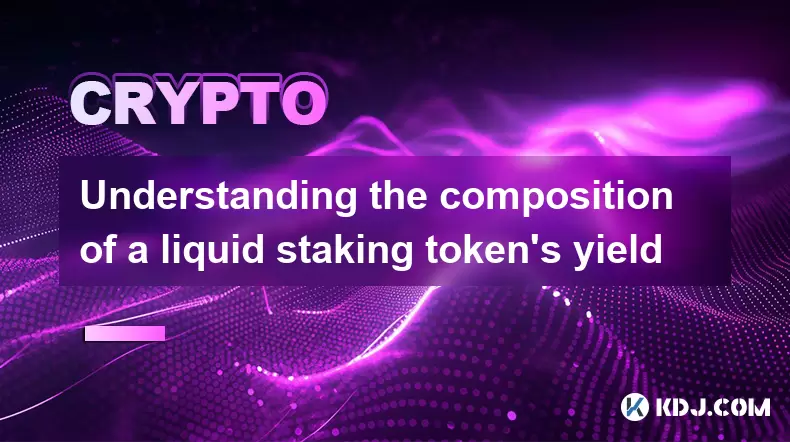
Understanding the composition of a liquid staking token's yield
Jul 20,2025 at 09:07am
What Is a Liquid Staking Token?A liquid staking token is a representative asset issued to users who stake their native cryptocurrency on a proof-of-st...
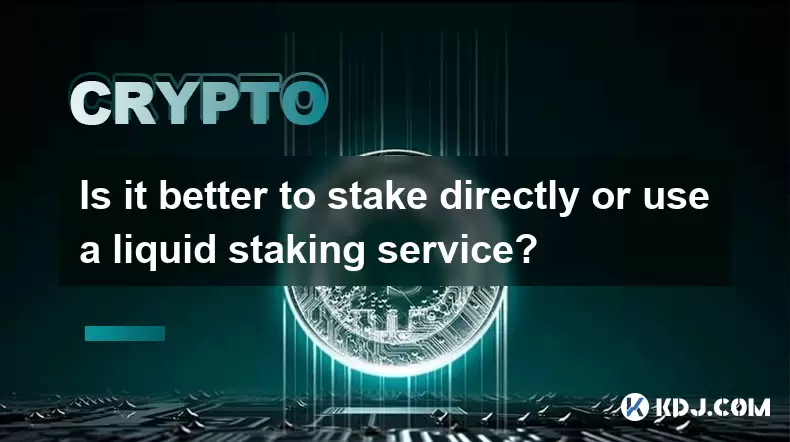
Is it better to stake directly or use a liquid staking service?
Jul 22,2025 at 08:21pm
Understanding the Basics of StakingStaking in the context of blockchain and cryptocurrency refers to the process of locking up digital assets to suppo...

What to do during an LST depeg event
Jul 20,2025 at 04:57pm
Understanding LST Depeg EventsAn LST (Liquid Staking Token) depeg event occurs when the token, which is typically pegged to the value of the underlyin...
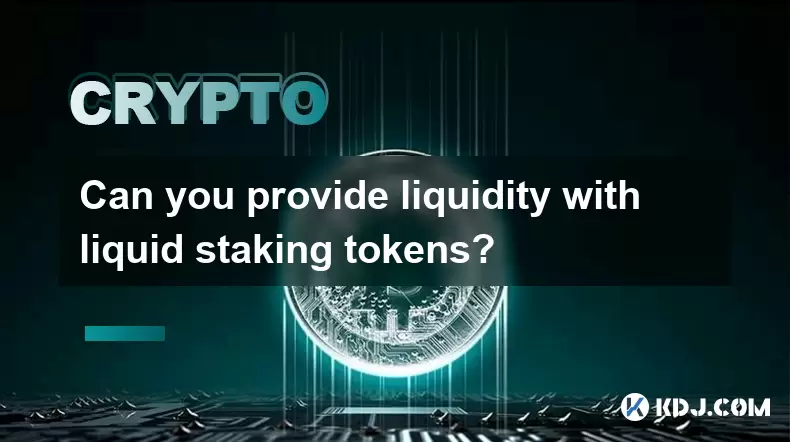
Can you provide liquidity with liquid staking tokens?
Jul 22,2025 at 10:22am
Understanding Liquid Staking TokensLiquid staking tokens (LSTs) are derivative tokens that represent staked assets on a proof-of-stake (PoS) blockchai...
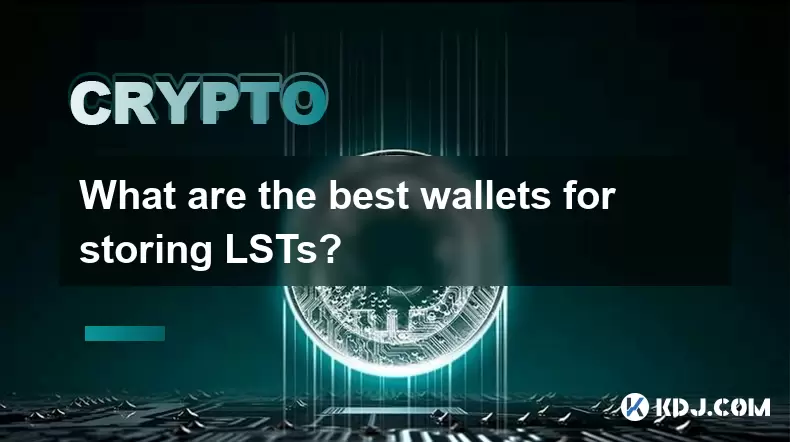
What are the best wallets for storing LSTs?
Jul 21,2025 at 03:14pm
Understanding LSTs and the Need for Secure StorageLSTs, or Liquid Staking Tokens, are derivative tokens representing staked assets on a blockchain. Wh...
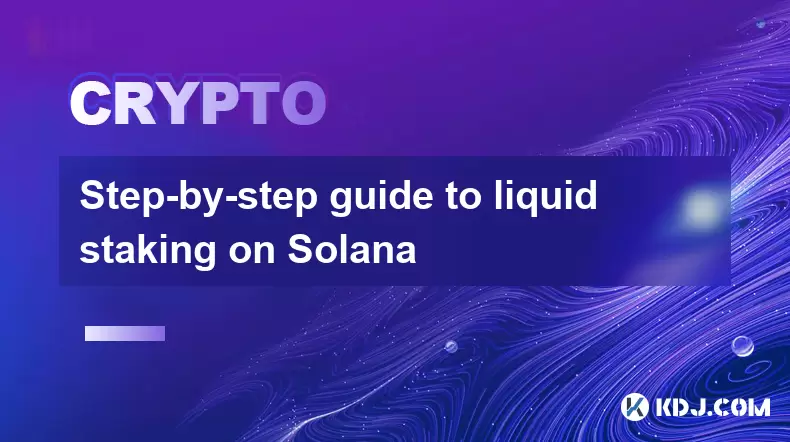
Step-by-step guide to liquid staking on Solana
Jul 20,2025 at 06:42am
What is Liquid Staking on Solana?Liquid staking is a mechanism that allows users to stake their cryptocurrency while retaining liquidity through the i...

Understanding the composition of a liquid staking token's yield
Jul 20,2025 at 09:07am
What Is a Liquid Staking Token?A liquid staking token is a representative asset issued to users who stake their native cryptocurrency on a proof-of-st...

Is it better to stake directly or use a liquid staking service?
Jul 22,2025 at 08:21pm
Understanding the Basics of StakingStaking in the context of blockchain and cryptocurrency refers to the process of locking up digital assets to suppo...

What to do during an LST depeg event
Jul 20,2025 at 04:57pm
Understanding LST Depeg EventsAn LST (Liquid Staking Token) depeg event occurs when the token, which is typically pegged to the value of the underlyin...

Can you provide liquidity with liquid staking tokens?
Jul 22,2025 at 10:22am
Understanding Liquid Staking TokensLiquid staking tokens (LSTs) are derivative tokens that represent staked assets on a proof-of-stake (PoS) blockchai...

What are the best wallets for storing LSTs?
Jul 21,2025 at 03:14pm
Understanding LSTs and the Need for Secure StorageLSTs, or Liquid Staking Tokens, are derivative tokens representing staked assets on a blockchain. Wh...

Step-by-step guide to liquid staking on Solana
Jul 20,2025 at 06:42am
What is Liquid Staking on Solana?Liquid staking is a mechanism that allows users to stake their cryptocurrency while retaining liquidity through the i...
See all articles

























































































